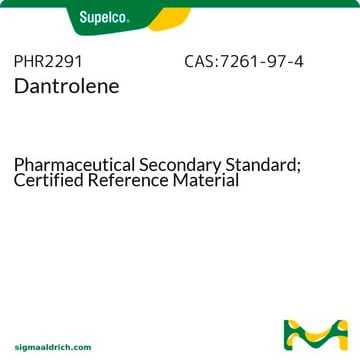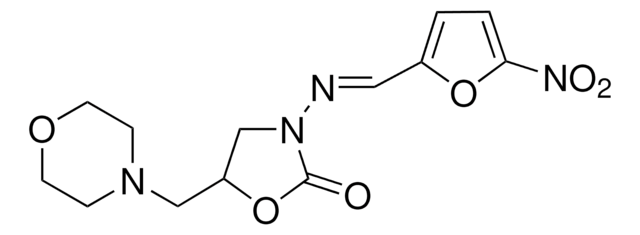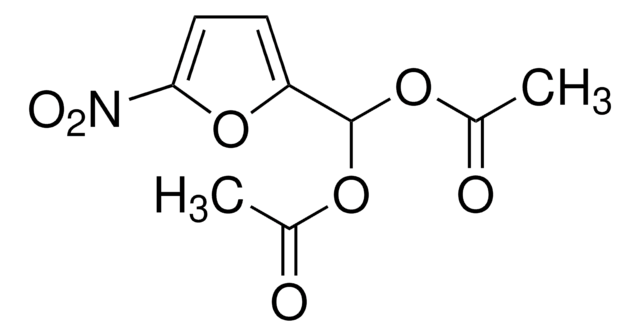PHR1196
Nitrofurazone
Pharmaceutical Secondary Standard; Certified Reference Material
Synonym(s):
5-Nitro-2-furaldehyde semicarbazone, NZ, Nitrofural, 5-Nitro-2-furfural semicarbazone, Furacin, NFZ, Nitrofurazone
About This Item
Recommended Products
grade
certified reference material
pharmaceutical secondary standard
Quality Level
Agency
traceable to Ph. Eur. N0950000
traceable to USP 1465004
API family
nitrofurazone
CofA
current certificate can be downloaded
technique(s)
HPLC: suitable
gas chromatography (GC): suitable
mp
242-244 °C (lit.)
application(s)
pharmaceutical (small molecule)
format
neat
storage temp.
2-30°C
SMILES string
NC(=O)N\N=C\c1ccc(o1)[N+]([O-])=O
InChI
1S/C6H6N4O4/c7-6(11)9-8-3-4-1-2-5(14-4)10(12)13/h1-3H,(H3,7,9,11)/b8-3+
InChI key
IAIWVQXQOWNYOU-FPYGCLRLSA-N
Looking for similar products? Visit Product Comparison Guide
General description
Application
Analysis Note
Other Notes
Footnote
related product
Signal Word
Warning
Hazard Statements
Precautionary Statements
Hazard Classifications
Acute Tox. 4 Oral - Aquatic Chronic 3 - Carc. 2 - Muta. 2 - Repr. 2 - Skin Sens. 1 - STOT RE 2
Target Organs
male reproductive organs
Storage Class Code
11 - Combustible Solids
WGK
WGK 3
Choose from one of the most recent versions:
Already Own This Product?
Find documentation for the products that you have recently purchased in the Document Library.
Customers Also Viewed
Our team of scientists has experience in all areas of research including Life Science, Material Science, Chemical Synthesis, Chromatography, Analytical and many others.
Contact Technical Service









